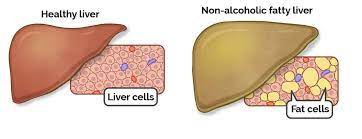
A recent study published in the Annals of Internal Medicine explored the effects of revised statin prescribing guidelines in 2013 on the usage patterns of these cholesterol-lowering medications among individuals at risk for atherosclerotic cardiovascular disease (ASCVD). The study, led by Dr. Timothy S. Anderson from the University of Pittsburgh, utilized data from the National Health and Nutrition Examination Survey covering the period from 1999 to 2018, involving 21,961 adults over 20 years old without ASCVD.
Insights from the Study
Despite the expanded indications introduced by the American College of Cardiology and the American Heart Association (ACC/AHA) in 2013, which broadened the criteria for prescribing statins in primary prevention, the study revealed that the actual usage of statins saw minimal change. While there was a gradual increase in statin use since 1999, peaking at 35% in 2013 following the guideline change, no significant increase was observed in the proportion of newly eligible adults for statin therapy.
Furthermore, the research highlighted a plateau in statin use among specific groups. For instance, among patients with diabetes, there was a notable 31.1 percentage point increase in statin use between 1999 and 2014, but this rate remained stagnant from 2014 to 2018. Similarly, for individuals with an ASCVD risk of more than 20%, statin use increased by 23.1 percentage points between 1999 and 2013 but did not show a subsequent increase between 2013 and 2018.
Challenges and Implications
The study emphasized that while the ACC/AHA guidelines expanded the scope for primary prevention of cardiovascular disease, the increased complexity in decision-making, including the need for multistep risk calculations, posed significant challenges for implementation. Factors such as limited time, lack of access to risk calculation tools, and other barriers in shared decision-making contributed to the observed trends in statin use.
Looking Ahead
The findings shed light on the practical challenges clinicians face in applying complex risk calculation tools and emphasize the need for more accessible and integrated approaches, potentially through electronic health record tools, to facilitate the implementation of guideline-based interventions for ASCVD prevention.
Despite limitations in available data, this study offers valuable insights into the gaps between guideline recommendations and actual clinical practice in statin utilization, signaling the necessity for more streamlined and feasible strategies for cardiovascular disease prevention among at-risk populations.











